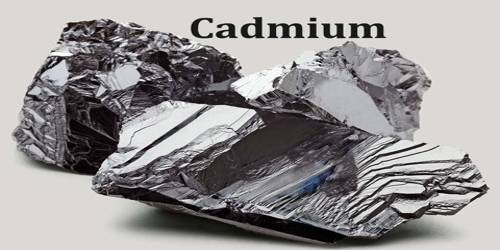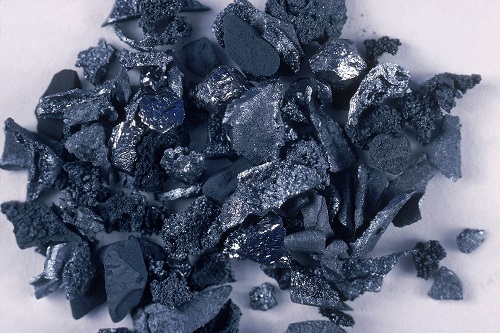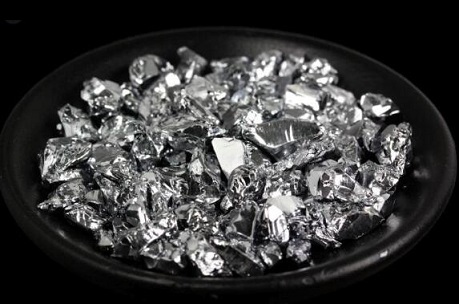Sources of Exposure and Risk Assessments of Cadmium
Mar 6,2020
First aid: Report all exposures to medical personnel immediately. Eye: Wash eyes immediately with large amounts of water for 15 min. If irritation persists, seek medical attention. Skin: Wash the exposed area with soap and water for 15 min. Inhalation: Move the person to fresh air.
Target organ(s): Oral: Kidney and bone. Inhalation: Kidney and lung
Occupational exposure limits: OSHA–PEL 5 μg/m3 (8-h workday). NIOSH–REL 9 mg/m3 (10 h TWA). ACGIH–TWA 0.01mg/m3
Reference values: MRL—short-term inhalation: 0.03 μg Cd/m3 (<14 day exposure). Chronic inhalation: 0.01 μg Cd/m3 (>1 year exposure). Chronic oral: 0.1 μg/kg/day (>1 year exposure). RfD: 5 × 10-4 mg/kg/day (water) and 1 × 10-3 (food). RfC: Not established.

SOURCES OF EXPOSURE
Occupational
The greatest risk to cadmium exposure by industrial workers includes processes where cadmium-containing materials are heated, including coating and electroplating, smelting operations, nickel–cadmium battery production, and phosphate fertilizer production and application. Another major route of incidental exposure comes from the ingestion of foods and cigarettes introduced to the mouth by contaminated hands and inhalation of dust and fumes.
Environmental
Cadmium is a naturally occurring element in the earth’s crust and thus, plants can accumulate large amounts of cadmium in their leaves. Smoking is a major source of environmental cadmium because of the ability of tobacco leaves to accumulate high levels of cadmium. The major source of cadmium is from food intake. Dietary consumption of organ meats and shellfish, leafy vegetables, potatoes and grains, soybeans and sunflower seeds contributes to the total cadmium body burden. Cadmium exposure from drinking water is not a major concern because the EPA mandates control water cadmium concentrations to be <5 μg/l.
INDUSTRIAL HYGIENE
Exposure Limits
ACGIH The ACGIH has established a threshold limit value (TLV) (8-h time-weighted average (TWA)) of 0.01 mg/m3 for cadmium and 0.002 mg/m3 for cadmium compounds.
NIOSH The National Institute for Occupational Safety and Health (NIOSH) considers cadmium compounds to be potential occupational carcinogens as defined by the Occupational Safety and Health Administration (OSHA) carcinogen policy (29 CFR 1990). Based on human data, the NIOSH has established an Immediate Threat to Life and Health (IDLH) level 50 mg/m3 in dust (Barrett and Card, 1947; Bulmer et al., 1938; Reinl, 1961) and 9 mg/m3 in fumes (Beton et al., 1966) for cadmium compounds.
OSHA The OSHA has established a PEL (8-h TWA) of 5 μg/m3 for shipyard, construction, and general industry.
RISK ASSESSMENTS

Listings as Hazardous Waste
Cadmium has been classified as a hazardous waste and has been registered in various publications as such including: Section 112 of the Clean Air Act lists cadmium compounds as one of the 189 chemicals inventoried as a hazardous air pollutant (EPA, 2007).
Title III of the Emergency Planning and Community Right-To-Know Act of 1986 (EPA, 2008c) requires annual reports of cadmium release to environmental release by any manufacture, import, process, or use.
Section 311 of the Clean Water Act requires that any discharge of cadmium and cadmium-containing compounds over a specified threshold level into navigable waters is subject to reporting requirements (EPA, 2008a).
The Resource Conservation and Recovery Act (RCRA) recognizes cadmium as a hazardous waste. Cadmium is also considered a priority persistent, bioaccumulative, and toxic (PBT) chemical under RCRA waste minimization chemical listing (EPA, 1998), thus, requiring groundwater monitoring at municipal solid waste landfills (EPA, 2008b).
IRIS The EPA’s Integrated Risk Information System (IRIS) oral and carcinogenicity assessments for cadmium were last revised in 1994 and 1992, respectively. The critical clinical effect for cadmium is significant proteinuria at an oral reference dose (RfD) of 5 × 10-4 mg/kg/day (water) and 1 × 10-3mg/kg/day (food). Based on the limited human evidence, the EPA has listed cadmium as a class B1, probable human carcinogen, based on an inhalation unit risk of 1.8 × 10-3per μg/m3. Carcinogenicity based on human exposures was described by Thun et al. (1985) showing that workplace exposures to cadmium could result in lung, trachea, or bronchus cancer.
WHO The World Health Organization (WHO) has set a drinking water guideline of 3 μg/l as well as an air guideline of 5 ng/m3 (annual average).
ATSDR The Agency for Toxic Substances and Disease Registry (ATSDR) has established Minimal Risk Levels (MRLs) for chronic and acute, oral and inhalation exposures to cadmium.
Inhalation The acute-duration MRL of 0.03 μg/m3 is based on a lowest-observed-adverse-effect level (LOAEL) of 0.088 mg/m3 in rats exposed to cadmium oxide for 6 h/day, 5 days/week for 2 weeks (NTP, 1995).
The chronic-duration MRL of 0.01 μg/m3 was derived using the 95% lower confidence limit of the urinary cadmium level associated with a 10% extra risk of low molecular weight proteinuria.
Oral The intermediate-duration MRL of 0.5 μg/kg/day is based on the skeletal effects in young female rats exposed to 0.05 mg/kg/day cadmium chloride in drinking water for up to 12 months (Brzóska and Moniuszko-Jakoniuk, 2005). The chronic-duration oral MRL of 0.1 μg/kg/day is based on proteinuria estimated from a meta-analysis of environmental exposure data. Using pharmacokinetic models, the MRL was determined using a calculated intake of 0.33 μg/kg/ day using the UCDL10 at age 55 and dividing by an uncertainty factor of 3 for human variability.
IARC The IARC’s review of cadmium as a carcinogen was last revised in 2008. Based on the limited human studies, this review listed cadmium as a Group 1 carcinogen: carcinogenic to humans.
ACGIH The ACGIH has listed cadmium as an A2 carcinogen: suspected human carcinogen.
EPA Based on a chronic intake that would result in a kidney concentration of 200 μg/g, the EPA established a RfD of 5 × 10-4mg/kg/day in water and 1 × 10-3mg/kg/day in food (IRIS, 2008).
CalEPA The California Environmental Protection Agency (CalEPA) in October 1996 listed cadmium as a carcinogen under Proposition 65. The California Air Resources Board also identified cadmium as a toxic air contaminant. FDA The United States Food and Drug Administration (FDA) limits cadmium levels in bottled drinking water at 0.005 mg/l (FDA, 2007).
REFERENCES
Cousins, R.J. (1979) Metallothionein synthesis and degradation: relationship to cadmium metabolism. Environ. Health. Perspect. 28:131–136.
Diaz-Barriga, F., Santos, M.A., Mejia, J.D.J., Batres, L., Yáñez, L., Carrizales, L., Vera, E., del Razo, L.M., and Cebrián, M.E. (1993) Arsenic and cadmium exposure in children living near a smelter complex in San Luis Potosi. Mexico. Environ. Res. 62(2):242–250.
Dudley, R.E., Gammal, L.M., and Klaassen, C.D. (1985) Cadmiuminduced hepatic and renal injury in chronically exposed rats: Likely role of hepatic cadmium-metallothionein in nephrotoxicity. Toxicol. Appl. Pharmacol. 77:414–426.
Edling, C., Elinder C.G., and Randma, E. (1986) Lung function in workers using cadmium-containing solders. Br. J Ind. Med. 43:657–662.
Elinder, C.G., Kjellström, T., Hogstedt, C., Andersson, K., and Spång, G. (1985c) Cancer mortality of cadmium workers. Br. J. Ind. Med. 42:651–655.
- Related articles
- Related Qustion
- Cadmium:Discovery,Mining,Uses,Health hazards May 30, 2024
Cadmium is a soft, silvery-white metal. It has 48 electrons arranged in an electronic configuration of [Kr]4d105s2.
- Toxicity of Cadmium Dec 3, 2021
Discovered in 1817 as an impurity in calamine (zinc carbonate) by Friedrich Stromeyer and Karl Samuel Leberecht Hermann while working independently, cadmium exists in abundance of w0.1 ppm in the Earth’s crust.
Boron occurs naturally as sodium borate (Na2B4O7) and calcium borate. Borax (Na2B4O710H2O) has been used for many purposes for years. The earth’s crust contains approximately 0.0008% boron (Cotton et al., 1999; Jansen, 2003).....
Mar 6,2020Inorganic chemistryChromium occurs in several different oxidation states from chromium metal to hexavalent chromium (Cr(VI)) compounds. In the environment, chromium exists primarily in the trivalent (Cr(III)) and Cr(VI) oxidation states.....
Mar 6,2020Inorganic chemistry






